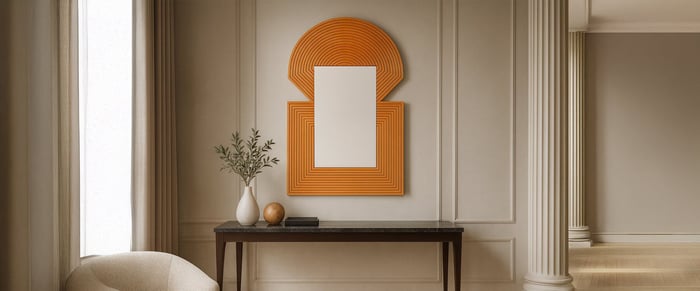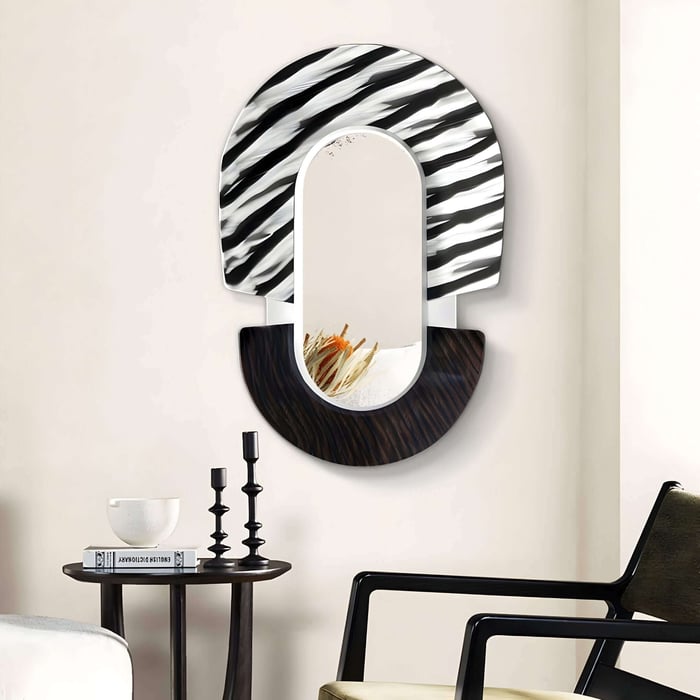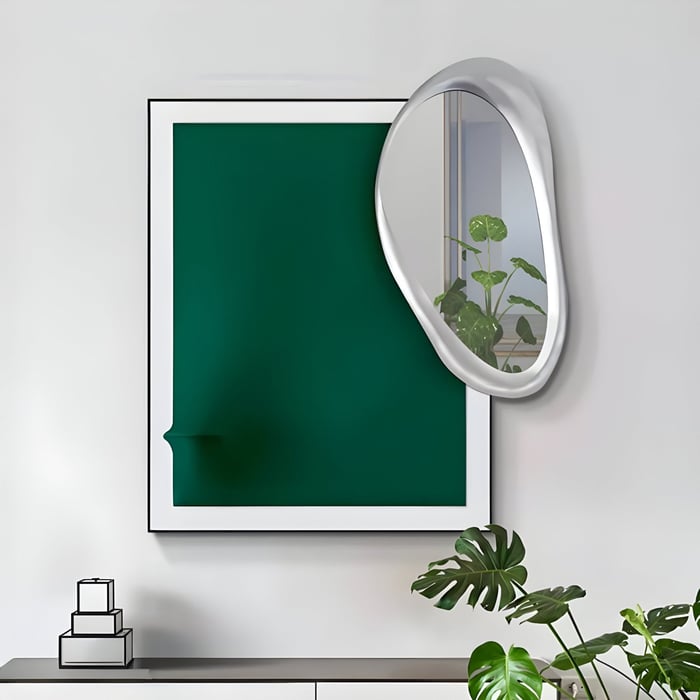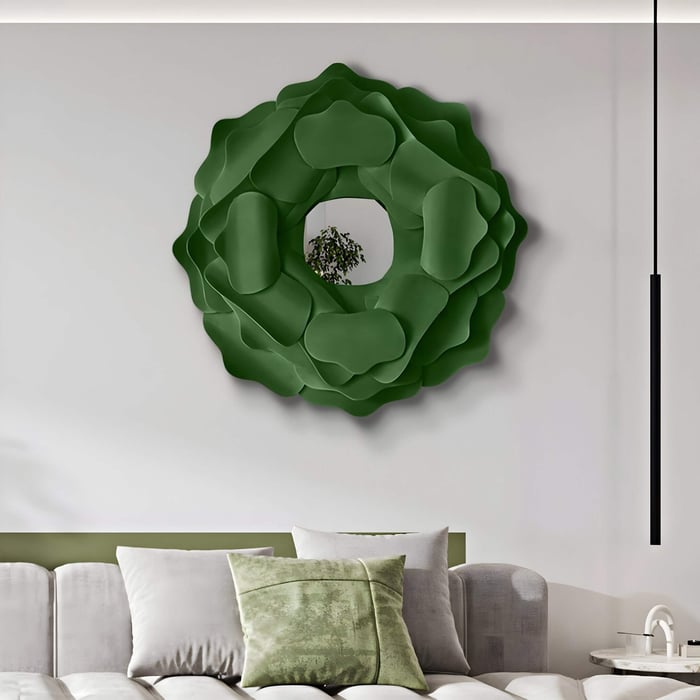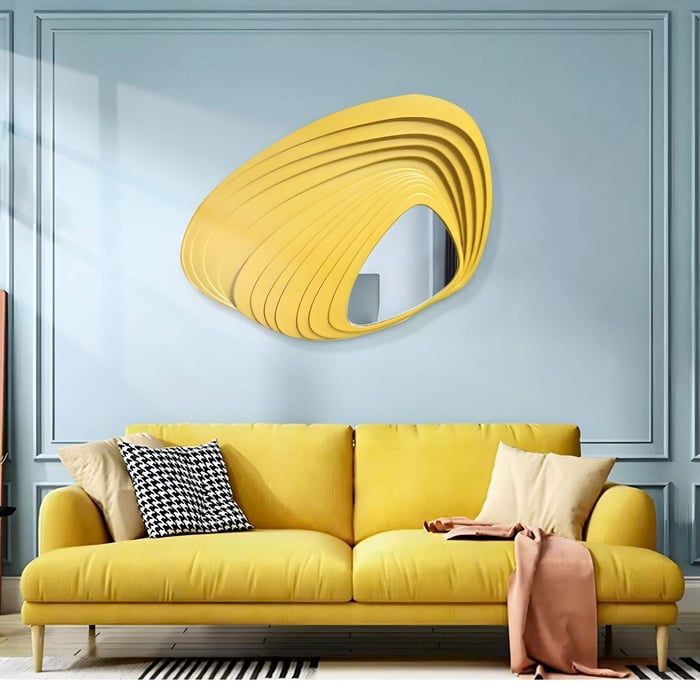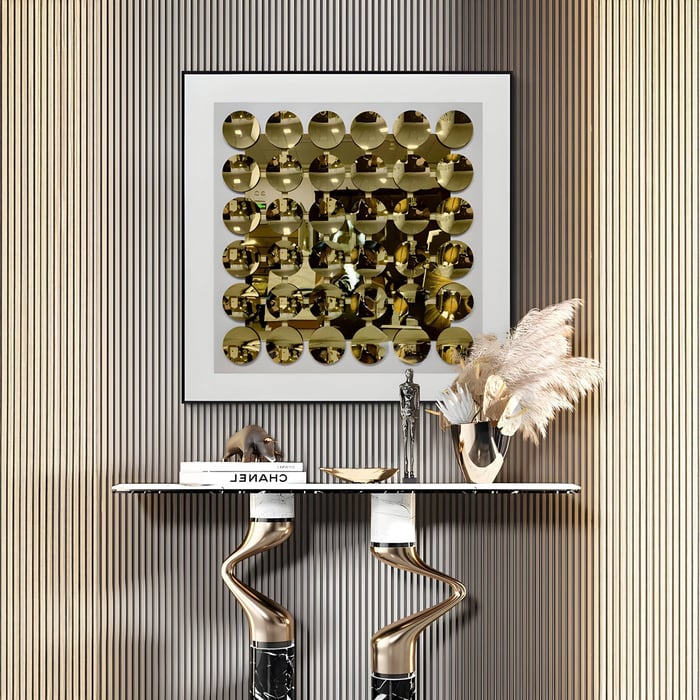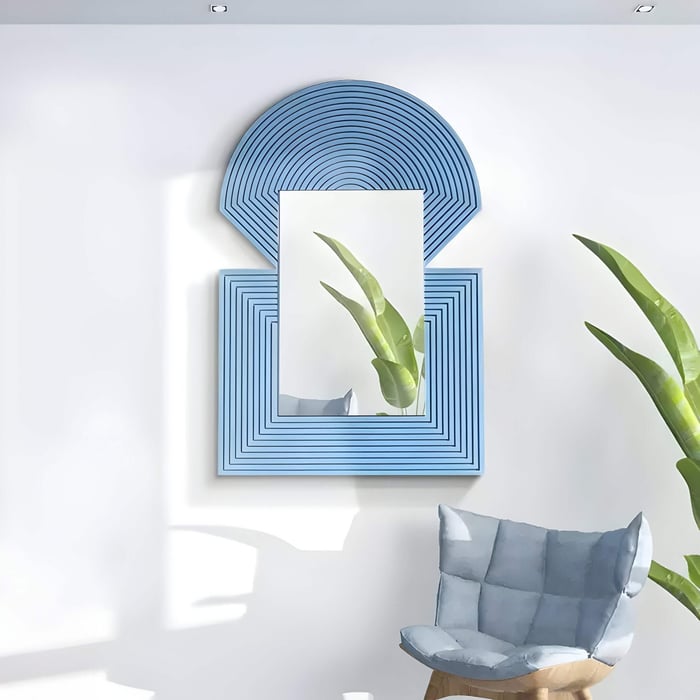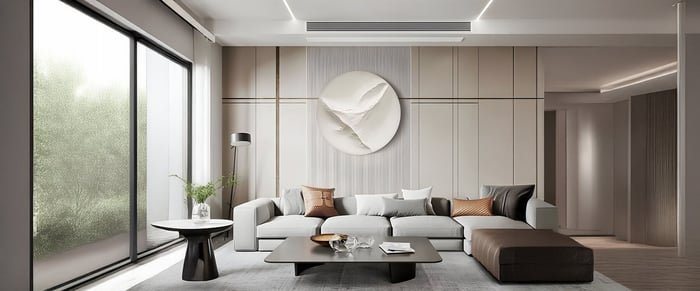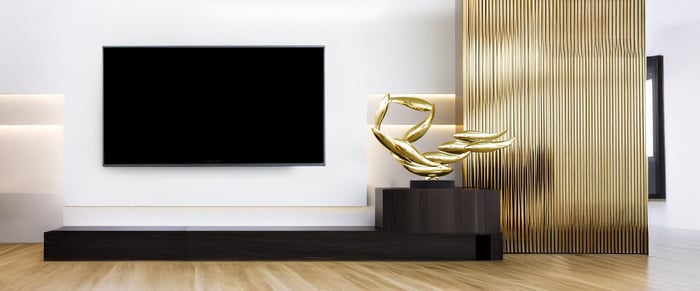Table of Contents
- Introduction - Beyond Reflection: Mirror Art as Illusion
- What Makes Mirror Art Illusions Captivate the Eye?
- Popular Illusion Styles in Mirror Art
- Why Mirror Art Illusions Work: Light, Space & Psychology
- Ideal Placement & Styling Tips
- Materials & Craftsmanship
- Care & Longevity
- Additional Trends & Innovations in Mirror Art
- Conclusion - Turning Walls into Living Reflections
- FAQs
Introduction - Beyond Reflection: Mirror Art as Illusion
Mirror art has long been admired for its reflective charm, but in today’s design world, it is pushing boundaries far beyond functionality. Contemporary mirror artworks incorporates geometry, layering, and light to create immersive optical illusions. These 3D wall pieces expand perceived space, amplify light, and invite interaction by transforming static walls into living canvases.
From sculptural installations that appear to ripple like water, to LED-infused infinity designs that create endless depth, mirror artworks are captivating additions to modern interiors. They blur the line between 3D art, wall sculpture, and functional décor. In this guide, we’ll explore illusion techniques, popular styles, placement tips, materials, and care, showing how reflective surfaces become transformative design statements.
What Makes Mirror Art Illusions Captivate the Eye?
The magic of 3D mirror wall art lies in its ability to trick perception. By cutting glass into angled facets, arranging mirrors into tessellations, or layering modules with depth, artists create compositions that appear three-dimensional despite being wall-mounted.
Geometric layouts such as cube grids or hexagonal panels enhance symmetry, while asymmetrical cuts create unexpected distortions. The way light hits these surfaces intensifies the illusion, amplifying shadows and reflections that change throughout the day.
Unlike a flat artwork that stays static, mirrors are inherently dynamic: a single piece reflects not just light but also its surroundings, making each moment unique. When designed as optical illusion art, they invite movement, curiosity, and layered interpretations. Viewers become part of the artwork itself, since their reflection constantly shifts the composition.
Popular Illusion Styles in Mirror Art
Geometric Cube Illusions
Using flat segments aligned at precise angles, these designs mimic cube fields and isometric structures. From a distance, the planes lock into a convincing 3D image, great for minimalist or modern interiors where symmetry and order matter. These pieces feel architectural, pairing beautifully with neutral palettes and clean-lined furniture.
Triangular 3D Modules
Triangular facets or prismatic segments create a jewel-like appearance. Frosted or tinted sections break up the reflection, making walls appear crystalline and textured. Perfect for feature walls in stairwells, galleries, or hallways.
LED-Enhanced Infinity Mirrors
Perhaps the most dramatic style, LED mirror wall décor creates tunnels of endless depth. Used in luxury homes, hotels, or entertainment spaces, they deliver atmosphere and intrigue. Dimmable LEDs make them adaptable, bright for impact, soft for ambient mood.
Half-Sphere & Gesture Mirrors
Domed or wave-shaped sculptural wall mirrors add a surreal edge. These distort reflections playfully, bending light like ripples across water. They are excellent for modern organic interiors where you want both softness and drama.
Abstract & Irregular Mirrors
Breaking away from symmetry, irregular forms scatter reflections unpredictably. These are highly artistic pieces suited to eclectic interiors. Designers often pair them with coloured frames or layered glass to enhance their expressive quality.
Organic Mirror Illusions
Inspired by rippling water, leaf shapes, or wave-like contours, organic art mirror designs soften interiors and pair well with biophilic themes.
Why Mirror Art Illusions Work: Light, Space & Psychology
Illusionary mirror artworks are not just stylish, they serve practical functions too. In smaller homes or city apartments, mirrors expand perceived dimensions. A narrow hallway instantly feels wider, and a dark corner brightens by reflecting natural light.
Psychologically, mirrors create a sense of liveliness. A wall that changes with your movement sparks curiosity and invites interaction. This is why reflective illusion paintings are often described as energising, they transform static interiors into ever-evolving spaces.
Moreover, reflections can amplify ambience. A dining room pendant lamp doubled in a mirror feels warmer and more inviting, while a mirror opposite a window maximises daylight. In hospitality spaces, mirror illusions create a buzz, making rooms feel social and dynamic.
Ideal Placement & Styling Tips
Mirror panels illusions depend as much on placement as design. Here’s how to make the most of them:
Lighting: Angle spotlights or sconces at 30° to bring out depth. For LED mirrors, dimmers allow you to shift from dramatic evening glow to subtle daytime shimmer.
Entryways: Expands narrow foyers, greets guests with a strong first impression.
Living Rooms: Place behind sofas or opposite windows to bounce natural light across the room.
Dining Walls: Large sculptural mirrors double the glow of chandeliers or pendants.
Scale Matters: Oversized panels dominate feature walls; smaller mirrors work well grouped in gallery-style arrangements.
Styling tip: Pair optical illusion artworks with textured finishes - stone, wood, or matte walls. The contrast grounds the shimmer of reflections.
Materials & Craftsmanship
The appeal of mirror illusions lies not just in design but in execution. Quality materials elevate an artwork from trendy to timeless:
Glass Mirrors: Polished edges, crisp reflections, and classic durability.
Mirrored Acrylic: Lightweight and shatter-resistant, safer for children’s rooms or busy corridors.
Tinted & Frosted Glass: Bronze, grey, or frosted coatings soften reflection and add atmosphere.
LED Integration: Combining light and reflection enhances illusions, especially infinity mirrors.
Craftsmanship matters too. Seamless joins, bevelled edges, and precision cutting ensure smooth transitions and convincing 3D effects. Artisans sometimes add hand-coloured tints, etched patterns, or layered glass to make each mirror sculpture one-of-a-kind.
Care & Longevity
Maintaining reflective illusion paintings and 3D mirror wall art is simple with the right care:
Dust weekly with a microfiber cloth.
Avoid abrasive cleaners that scratch reflective coatings.
Use glass-safe sprays for deeper cleaning.
For LED pieces, ensure wiring remains dust-free and avoid moisture exposure.
When well cared for, mirror and glass art maintains both brilliance and structural integrity for years.
Additional Trends & Innovations in Mirror Art
Sustainable Designs: Many artists now use recycled glass or eco-friendly acrylic alternatives, aligning with sustainable interior trends.
Smart Tech Integration: Some sculptural wall mirrors incorporate smart lighting systems controlled via apps or voice assistants, allowing interactive colour changes.
Custom Commissions: Bespoke sizes, colours, and modular panels are becoming popular, letting clients integrate mirrors seamlessly into unique spaces.
Hospitality & Commercial Use: Mirror illusions are trending in boutique hotels, spas, and galleries where ambience and guest experience matter most.
Conclusion - Turning Walls into Living Reflections
Mirror art illusions transform interiors by combining modern art with optical intrigue. Whether geometric, organic, or LED-enhanced, these works go beyond reflection to shape perception, depth, and emotion.
By choosing the right placement, lighting, and material, you can turn a blank wall into a dynamic stage, inviting light, space, and visual drama into your home. For collectors, designers, or homeowners, mirror artworks are more than decorative, they are interactive design statements.
Explore the sculptural possibilities at Giant Sculptures, where mirrored wall art redefine the relationship between design and reflection.
FAQs
How do mirror illusions affect small spaces?
They bounce light and extend sightlines, making compact spaces feel open, larger and brighter.
Are LED mirror illusions energy-intensive?
No, modern LEDs are highly efficient and long-lasting.
Can these mirrors be custom-made?
Yes, many artists and makers offer bespoke sizes, shapes, and lighting options.
Are mirrors safe in bright hallways?
Yes, but tinted or frosted coatings can help control glare.
Do mirrors create glare?
Proper angling and tinted coatings reduce glare, keeping reflections comfortable.














































































